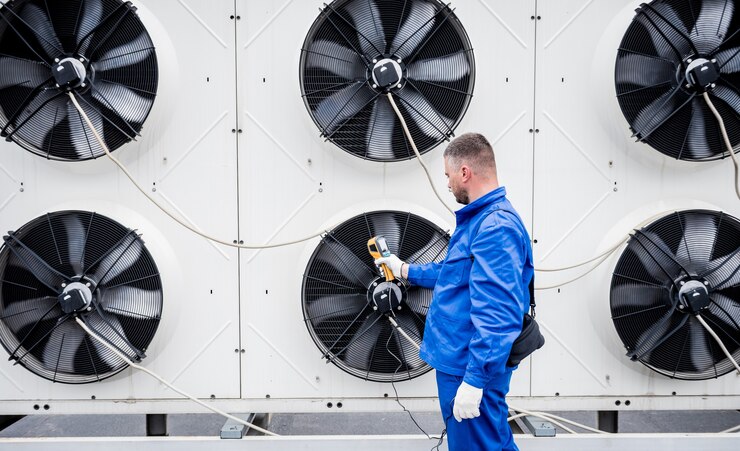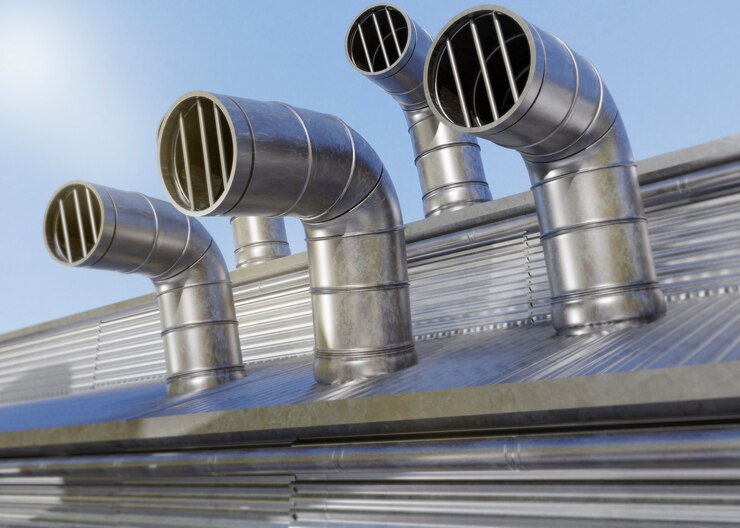When it comes to optimizing your home’s heating, ventilation, and air conditioning (HVAC) system, the materials used in your air ducts play a crucial role. From efficiency to longevity, the type of duct material you choose can significantly impact your system’s performance and maintenance requirements. As experts in HVAC services, including air duct cleaning and maintenance. Ladnek is here to shed light on the four most common air duct materials. Whether you’re considering a new installation or replacing existing ductwork, understanding these materials is essential for making informed decisions about your home’s HVAC system.
#1. Sheet Metal Air Ducts:
The most prevalent type of rigid air duct material found in homes today is sheet metal, typically crafted from either galvanized steel or aluminum. Sheet metal ducts come in various shapes, including round, rectangular, and spiral oval, offering versatility to accommodate different architectural layouts. Aluminum sheet metal, known for its corrugated design, provides added durability at joints and bends, ensuring structural integrity.
Advantages:
Cost-effective:
Sheet metal air ducts are often less expensive than other materials, making them a budget-friendly option for homeowners.
Customizable: They can be painted to match interior decor, offering aesthetic flexibility.
Resistant to water damage: Sheet metal is non-porous, meaning it does not absorb water, reducing the risk of mold growth and water damage.
Lightweight: Sheet metal ducts are lighter than most other metal options, making them easier to handle and install.
#2. Stainless Steel Air Ducts:
Stainless steel ducts, while more commonly used in commercial settings, are gaining popularity in residential applications due to their superior durability and flexibility. These ducts offer enhanced resistance to corrosion and are ideal for installations where flexibility is paramount. Though they come with a higher upfront cost, stainless steel ducts offer long-term reliability and performance.
Advantages:
Exceptional durability: Stainless steel ducts are highly resistant to corrosion, ensuring longevity and reliability.
Greater flexibility: They can be bent and shaped more easily than traditional sheet metal ducts, allowing for complex installations.
Suitable for various settings: Stainless steel ducts are suitable for both residential and commercial applications, offering versatility.
Certification: Ladnek’s stainless steel air ducts are certified by the National Air Duct Cleaners Association (NADCA) for quality and performance.
#3. Fiberboard Air Ducts:
Fiberboard air ducts consist of compressed resin boards bonded with organic glass fibers, offering an affordable alternative to traditional metal ductwork. These ducts come with a foil face for added protection and can be customized to fit any size or configuration. Additionally, you can go with Ladnek if you are in search of Duct cleaning near me. While fiberboard ducts provide excellent thermal and acoustic insulation, they may have a shorter lifespan compared to metal alternatives.
Advantages:
Cost-effective option: Fiberboard ducts are typically less expensive than metal alternatives, making them budget-friendly.
Excellent insulation properties:
They provide effective thermal and acoustic insulation, improving energy efficiency and reducing noise transmission.
Resistance to pests: Fiberboard is resistant to rodents and pests, reducing the risk of infestations.
Certification: Ladnek’s fiberboard air ducts are certified by the Safety Training for Operational Workers (STOW) for compliance with safety standards.
#4. Fiberglass Air Ducts:
Fiberglass air ducts consist of sheet metal ducts lined with fiberglass insulation to prevent air loss and condensation. These ducts offer superior sound dampening properties and are commonly used in commercial buildings. However, fiberglass may deteriorate over time, posing health risks due to airborne particle release.
Advantages:
Effective insulation: Fiberglass insulation reduces heat loss and condensation, improving energy efficiency and preventing moisture buildup.
Sound dampening: Fiberglass liners provide effective sound dampening, reducing noise from HVAC systems and improving indoor comfort.
Certification: Ladnek’s fiberglass air ducts are certified by the International Sanitary Supply Association (ISSA) for meeting sanitation standards.
#5. Flexible Air Ducts:
Flexible air duct cleaning features a spring steel wire helix encased in polymer plastic, offering unparalleled flexibility for complex installations. These ducts are lightweight and easy to install, making them ideal for retrofitting existing systems or navigating tight spaces. However, proper installation by trained professionals is crucial to prevent air loss and ensure optimal performance.
Advantages:
Flexibility: Flexible ducts can be easily bent and shaped to navigate tight spaces and obstacles, allowing for versatile installations.
Ease of installation: They are lightweight and easy to handle, reducing labor costs and installation time.
Ideal for retrofitting: Flexible ducts are well-suited for retrofitting existing HVAC systems, offering flexibility and convenience.
In conclusion, the choice of air duct material is a critical consideration for homeowners looking to optimize their HVAC systems. Whether you prioritize affordability, durability, or flexibility, there is a duct material suited to your needs. Hopefully, the information shared in this post on duct cleaning service and duct material will be more helpful for you.
Contact us today!
📞 Call: 1-868-23L-ADNK (1-868-235-2365)
📧 Email: [email protected]
📍 Visit us at 128 SMR, Bamboo Village La Romaine, San Fernando.






